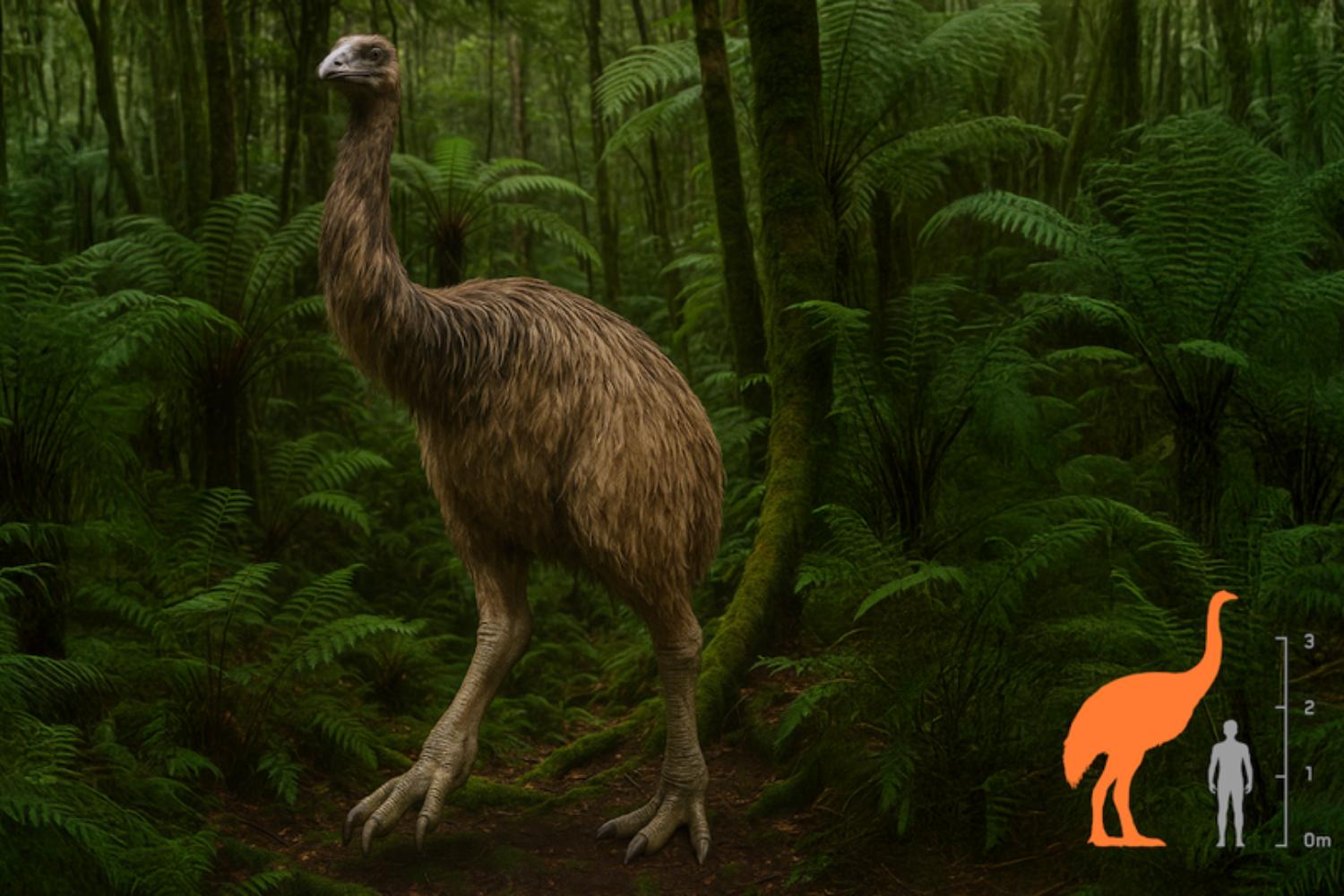Peter Jackson funds a bold bid to bring back New Zealand’s extinct giant Moa bird, but scientists warn it may be more illusion than science.

@Colossal Bioscience
It’s not a new film trilogy that’s capturing Peter Jackson’s imagination, but something far stranger—an extinct bird the size of a basketball hoop. The famed director of The Lord of the Rings is now channeling his energy (and money) into a genetic moonshot: bringing back the giant Moa, a flightless bird that once roamed New Zealand and disappeared roughly 600 years ago.
Towering over 10 feet tall (more than 3 meters) and weighing up to 550 pounds (around 250 kilograms), the Moa was one of the most imposing avian species to ever exist. Now, thanks to a collaboration between Jackson, the Ngāi Tahu Research Centre, the Canterbury Museum, and Colossal Biosciences—a Texas-based company with bold ambitions to “de-extinct” everything from woolly mammoths to dodos—the Moa might walk the Earth again.
Decoding the DNA of a long-lost giant
The plan is bold. Scientists aim to extract and analyze ancient DNA from the nine known species of Moa to reconstruct the genetic blueprint of the largest one, Dinornis robustus. But here’s the rub: there are no close living relatives. The Moa’s closest known cousin is the tinamou, a small South American bird that diverged from the Moa line about 58 million years ago.
That evolutionary chasm makes things extremely complicated. Since tinamous are far too small to act as egg carriers, researchers are eyeing the emu—a modern-day giant bird from Australia—as a surrogate mother. But the chances of success are low. It’s a bit like trying to raise a blue whale in a bathtub.
Why scientists are skeptical
The scientific community is, to put it lightly, not sold on the dream. Many experts argue that bringing back the Moa is not just a technical long shot, but also a misguided distraction.
First, the ancient DNA they’re working with is highly degraded. There’s no complete genome available, which means any revival would rely heavily on genetic patchwork, guesswork, and possibly synthetic constructs to fill in the gaps. You might end up with a bird that looks like a Moa—but isn’t one, biologically speaking.
Then there’s the issue of incubation. The Moa laid giant eggs, and there’s simply no living bird suited to nurture such a massive embryo. Even if scientists managed to piece together a viable embryo, who would hatch it? Not the tinamou. The emu, though closer in size, is still millions of years removed from the Moa’s evolutionary tree.
And let’s say, somehow, a Moa-like chick is born. That’s just the beginning. To form a sustainable population, hundreds of individuals would be needed to avoid inbreeding. But where would they live? The original habitats are long gone, and placing them in modern ecosystems—already under stress—would be a gamble, at best.
As one researcher put it bluntly: “You wouldn’t be resurrecting the Moa. You’d be making a Moa-shaped bird with no place in the world.”
The real crisis: today’s vanishing biodiversity
Beyond the technical hurdles, there’s a deeper concern. With hundreds of native species in New Zealand and the Pacific already on the brink of extinction, many argue that pouring millions into “de-extinction” projects is a kind of luxury science—fascinating, yes, but a distraction from urgent conservation efforts.
There’s also a moral hazard: if people believe that extinction is always reversible, they might be less inclined to protect vulnerable species in the first place. Conservation isn’t just about nostalgia; it’s about stewardship of what’s still here.
As some ecologists have warned, “De-extinction could shift our focus from saving life to reanimating ghosts.”
A scientific frontier—or a vanity project?
To be fair, Colossal Biosciences insists that its goals are ecological, not nostalgic. Even if recreated animals aren’t perfect replicas, they could still help restore lost functions in damaged ecosystems.
But critics remain skeptical. They see these projects as science chasing headlines, or worse, playing god with no clear outcome. If the Moa 2.0 ends up biologically compromised, ecologically irrelevant, and ethically problematic, is it worth the risk?
In the end, Peter Jackson’s latest venture may not be a fantasy epic—but it’s definitely an epic fantasy.
SOURCE: Colossal Bioscience New Scientist / Predator Free NZ Trust
